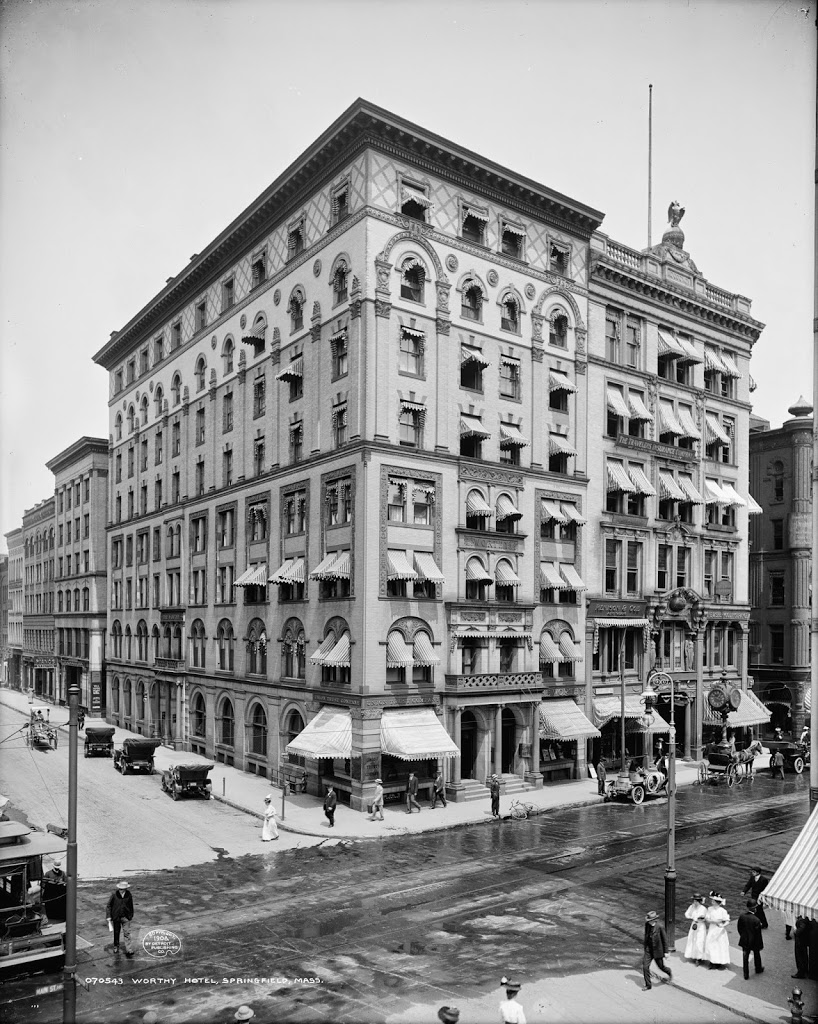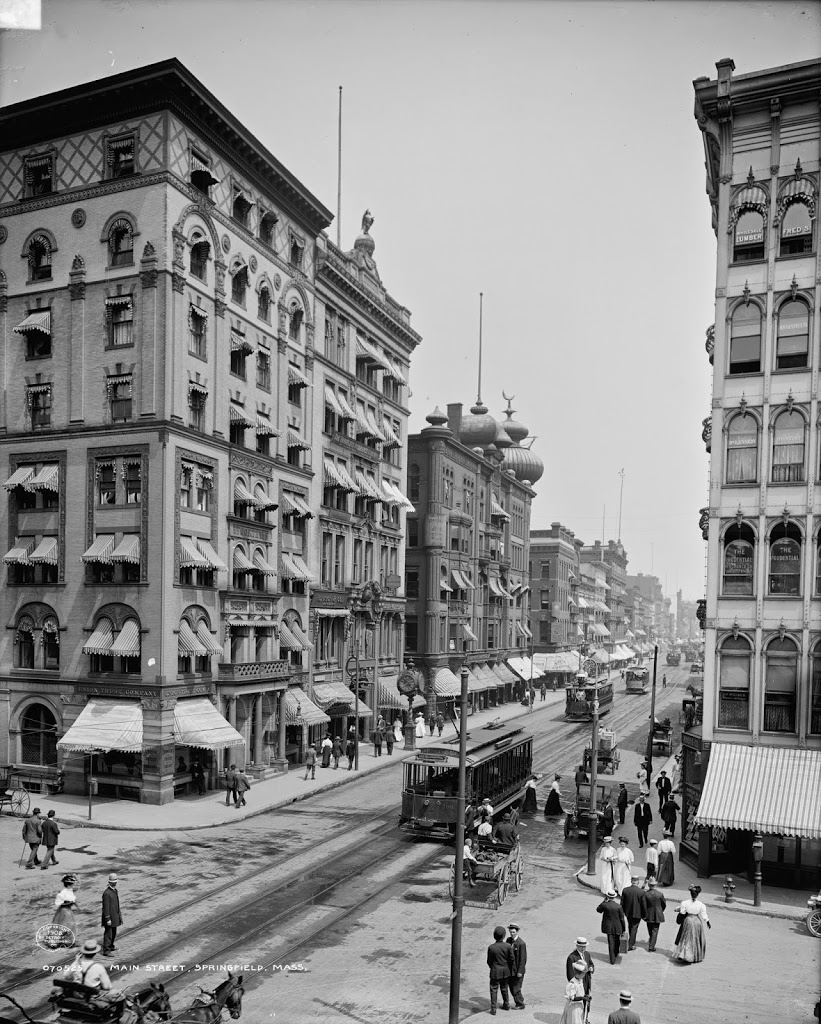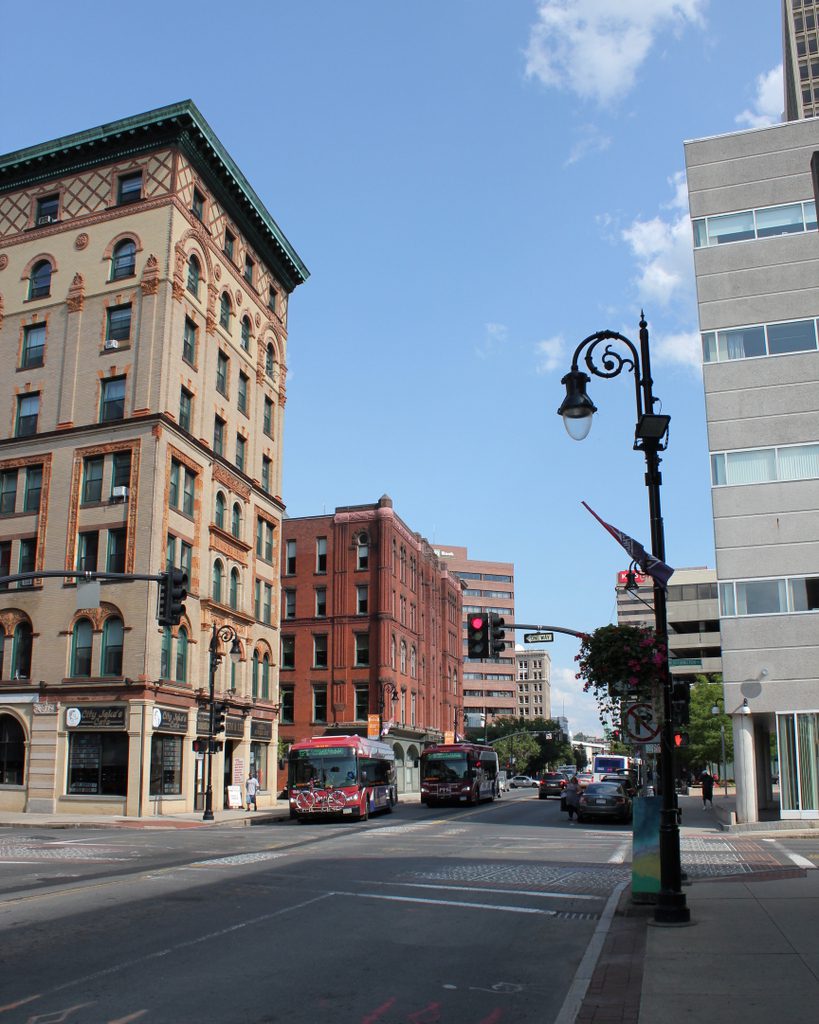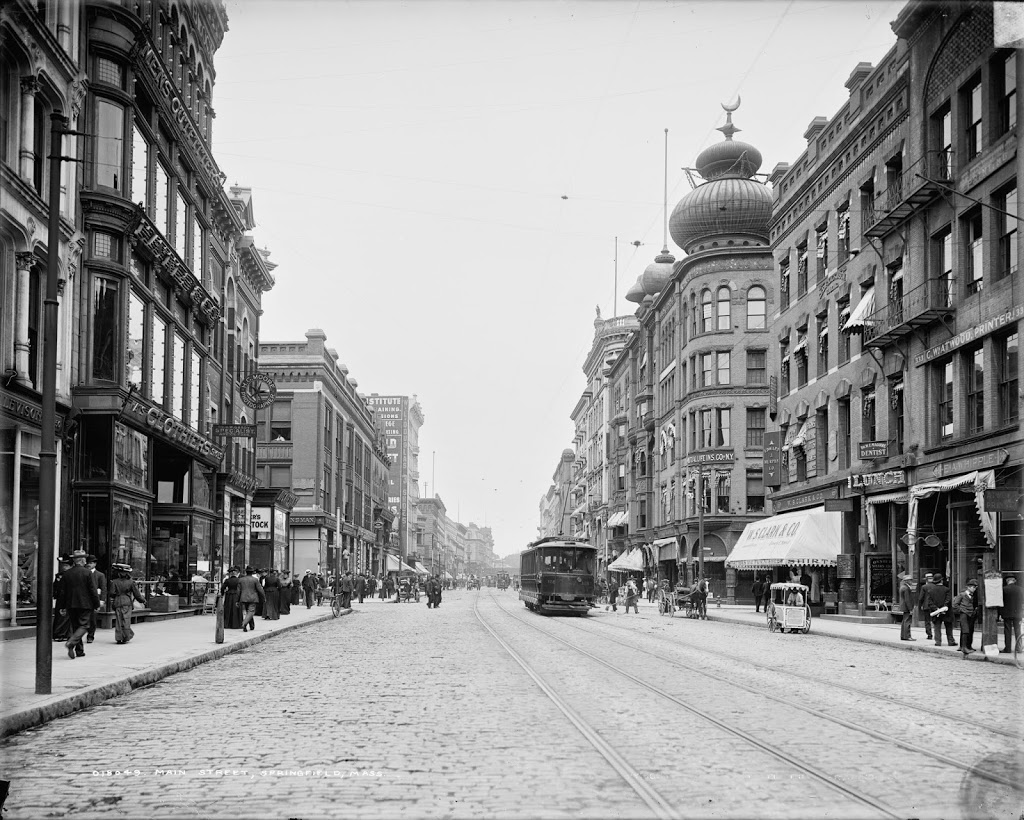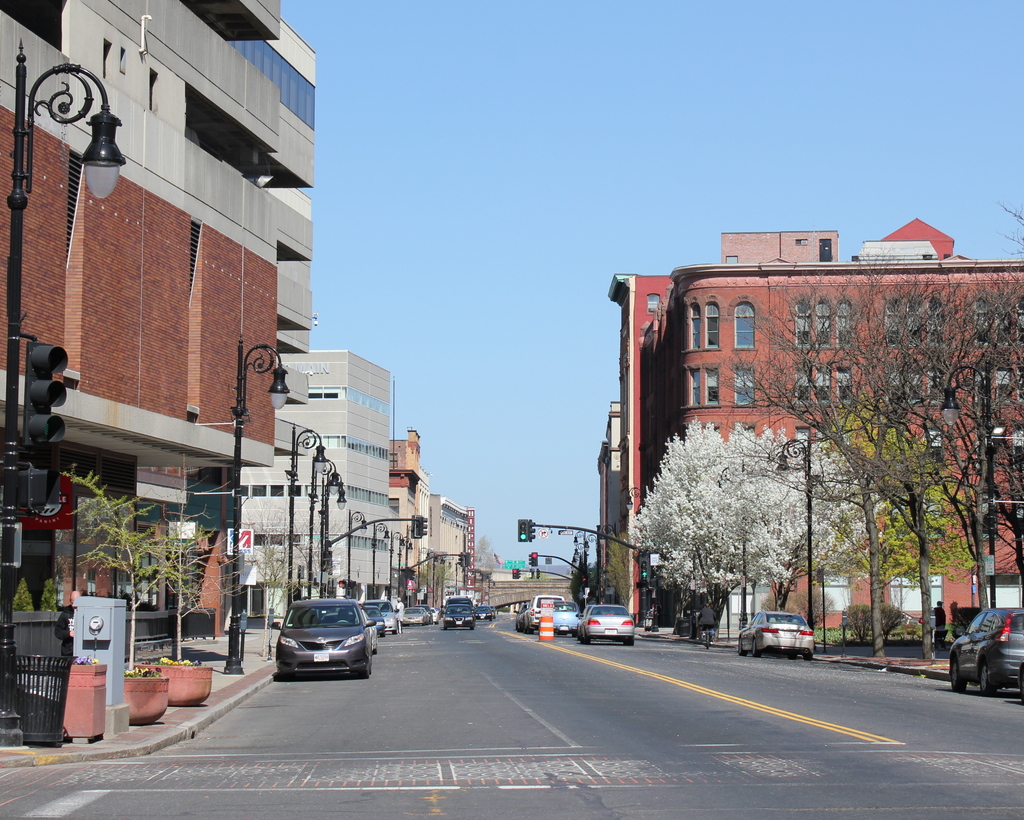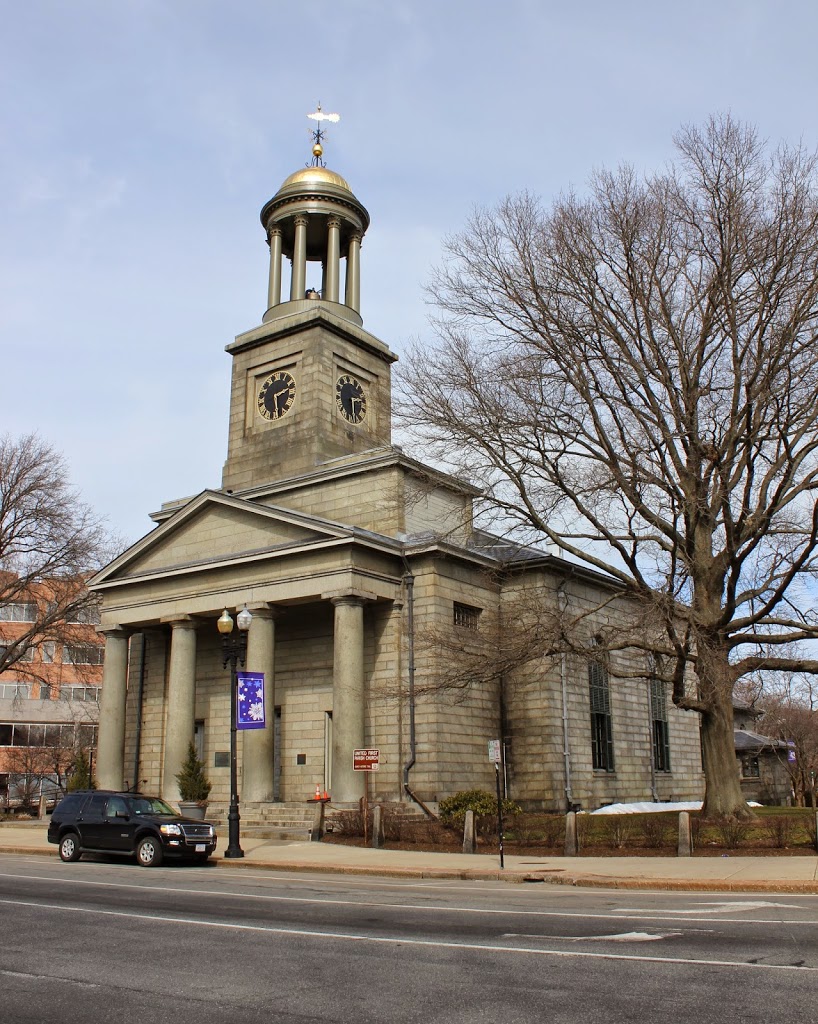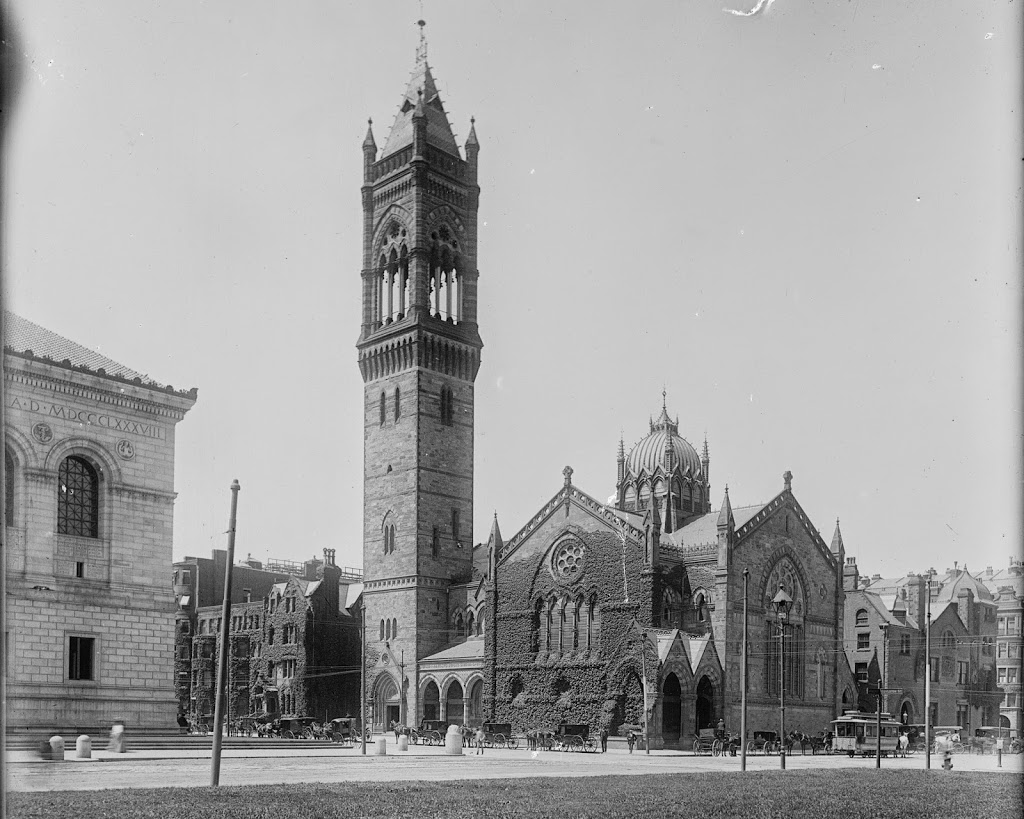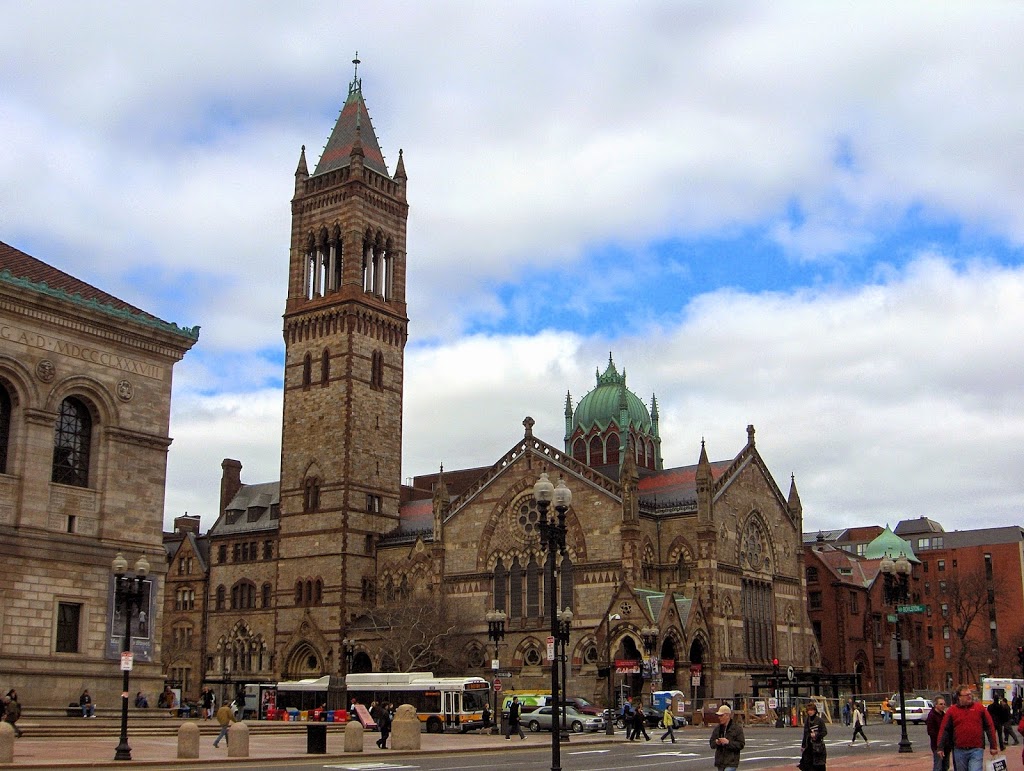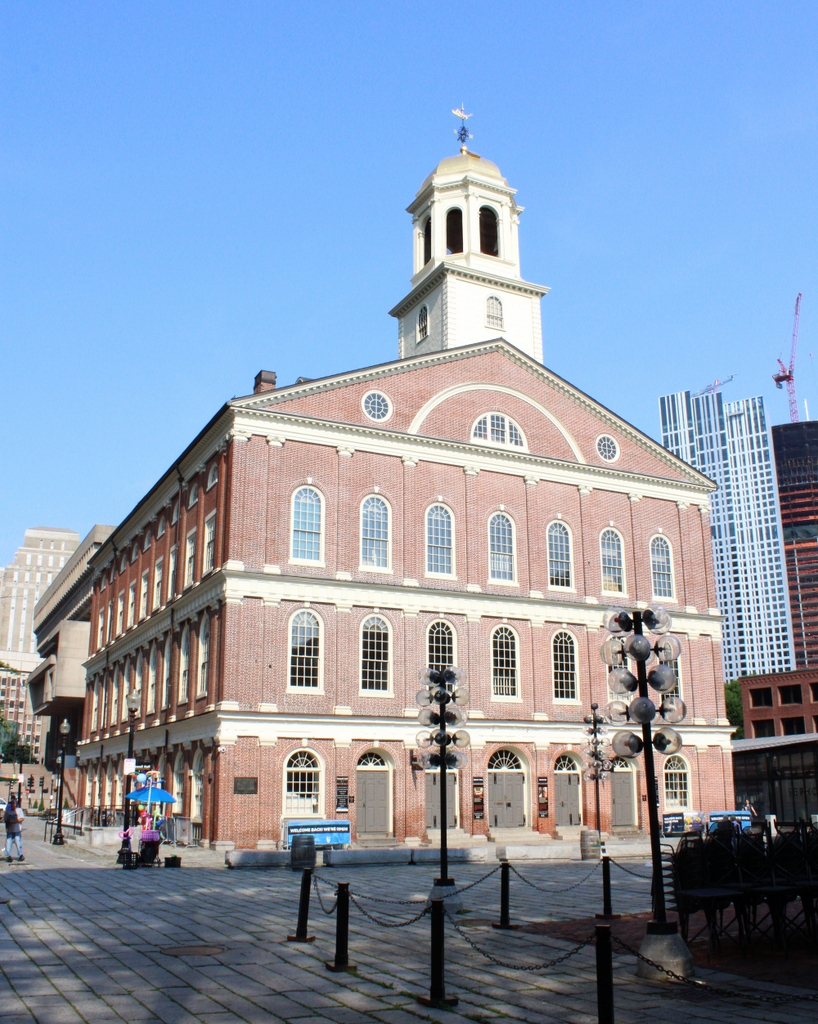The Hotel Worthy, at the corner of Main and Worthington in Springfield, around 1908. Image courtesy of the Library of Congress, Detroit Publishing Company Collection.
The building in 2017:
Unlike many of the other views of downtown Springfield from the turn of the last century, almost nothing has changed in this scene. Taken from the corner of Main and Worthington, with Worthington to the left and Main to the right, most of the buildings in this photo have survived. The only exception is the building to the immediate right of the Hotel Worthy, which is now a public square. The historic hotel itself is now an apartment building, and the buildings beyond it to the left down Worthington Street now house a variety of bars and restaurants. One of these, Smith’s Billiards, has actually been open since before the 1908 photo was taken, and it is supposedly the oldest pool hall in the United States.

